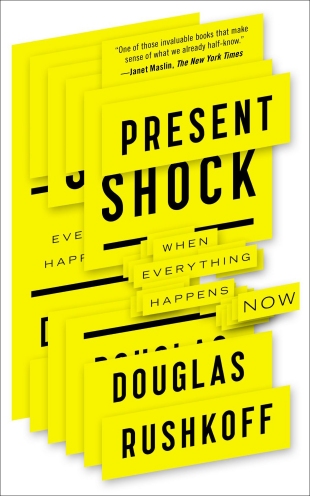"The ancient Greeks would probably tell us our troubles stem from our inability to distinguish between the two main kinds of time, chronos and kairos. It's as if they understood that time is simply too multifaceted to be described with a single word. Chronos is the kind of time that's registered by the clock: chronology. It's not time itself but a particular way of understanding time by the clock. That's what we literally mean when we say 'three o'clock.' This is time of the clock, meaning belonging to the clock, or chronos.
"Kairos is a more slippery concept. Most simply, it means the right or opportune moment. Where chronos measures time quantitatively, kairos is more qualitative. It is usually understood as a window of opportunity created by circumstances, God, or fate. It is the ideal time to strike, to propose marriage, or to take any particular course of action. Carpe diem. Kairos is perfect timing relative to what's going on, where chronos is the numerical description of what happens to be on the clock right then. Chronos can be represented by a number; kairos must be experienced and interpreted by a human.
"While clocks may have suggested that we live in a world bound by chronos, digitality asks us to embody chronos itself. Where the arms of the clock passed through the undefined, unmeasured spaces between numbers, digital technology registers only chronos. It does not exist between its pulses. This is why we call it an asynchronous technology: it does not pass. It is the ticks of the clock but none of the space between. Each new tick is a new line of a code, a new decision point, another division — all oblivious to what happens out there in the world — except when it gets a new discrete input from one of us.
"Digital time ignores nearly every feature of kairos, but in doing so may offer us the opportunity to recognize kairos by its very absence. Clocks initially disconnected us from organic time by creating a metaphor to replace it. Digital time is one step further removed, replacing what it was we meant by 'time' altogether. It's a progression akin to what postmodern philosopher Jean Baudrillard called the 'precession of the simulacra.' There is the real world, then there are the metaphors and maps we use to represent that world, and then there is yet another level of activity that can occur on those maps — utterly disconnected from the original. This happens because we have grown to treat the maps and symbols we have created as if they were the underlying reality. Likewise, we started with this amorphous experience of rhythms that we called time. We created the analog clock to represent the aspects of time we could represent with a technology. Then, with digital readouts, we created a way of representing what was happening on that clock face. It is twice removed from the original.
"Now that chronos has been fully freed from the cycles and flows through which we humans experience time, we can more easily differentiate between the kinds of clocks and time we are using. We can stop forcing our minds and bodies to keep up with digital chronos while also ceasing to misapply our digital technologies to human processes. We come to fully recognize the difference between chronos and kairos, or between time and timing.
"Or think of it this way: Digital technology is more like a still-life picture. A sample. It is frozen in time. Sound, on the other hand, is audible only over time. We hear sound as it decays. Image may be thought of as chronos, where sound is more like kairos. Not surprisingly, the digital universe is a visual one: people staring silently at screens, where the only sounds in the room are the keys and mouse clicks."
